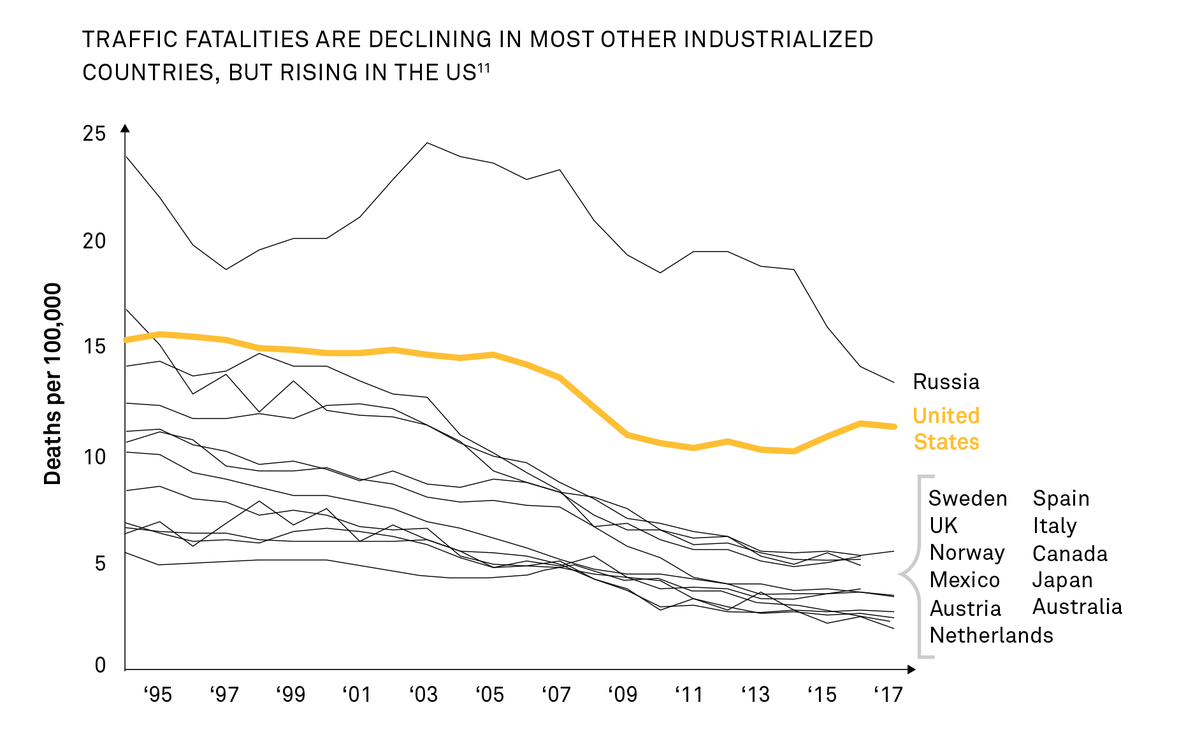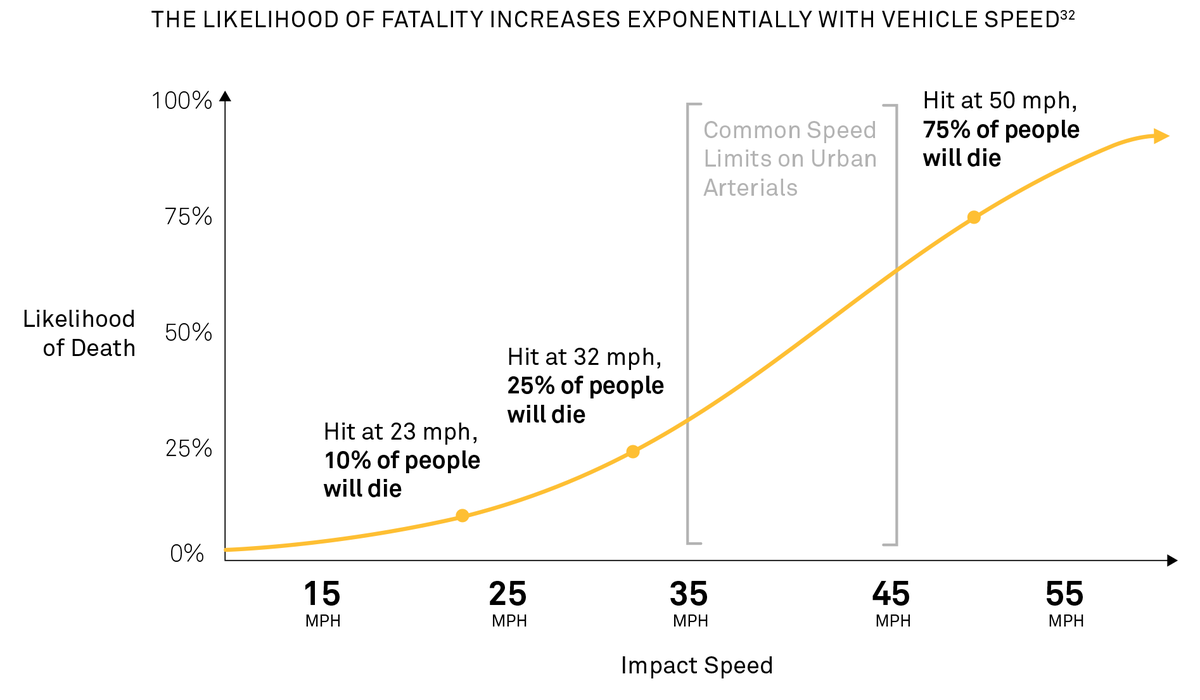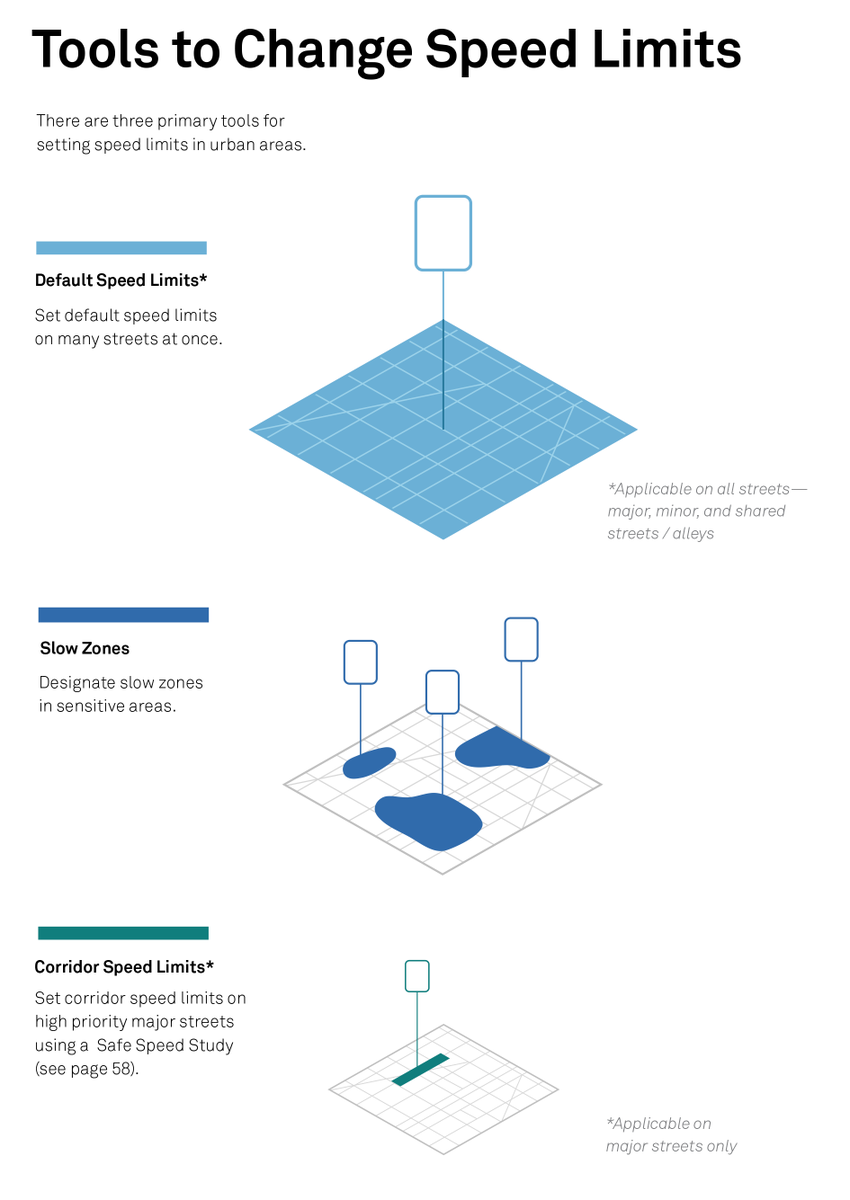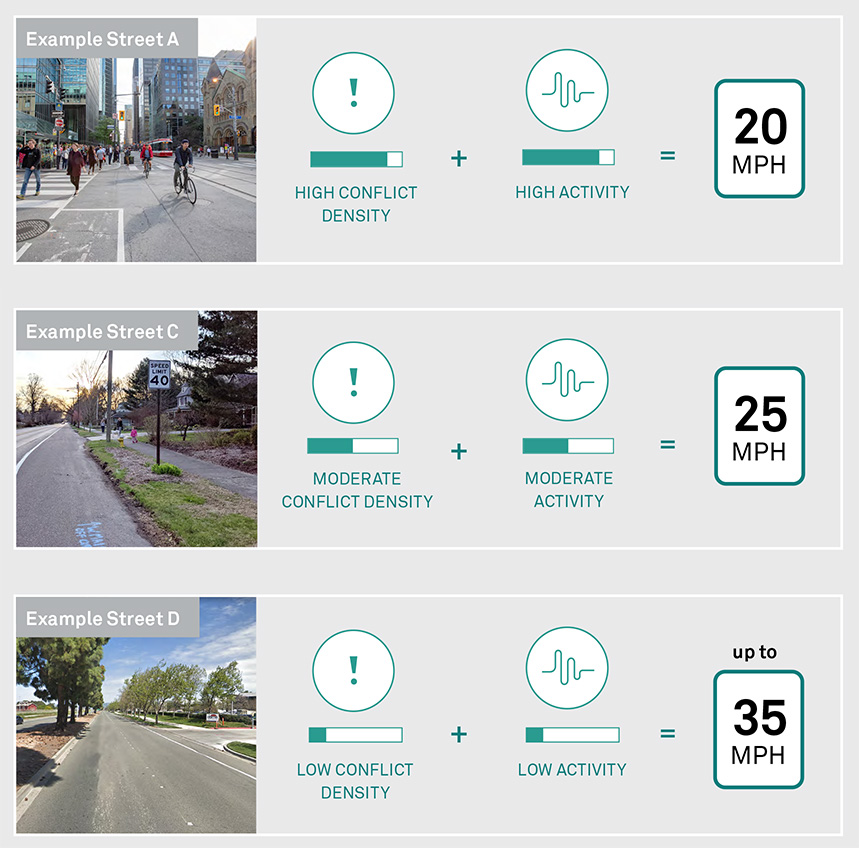Released today: City Limits, a guide to safe #speedlimit setting on urban streets.
The most commonly used speed limit setting practices in the U.S. are oversimplified, outdated, & unsafe. City Limits provides an easy-to-follow context-sensitive approach. https://nacto.org/safespeeds/
The most commonly used speed limit setting practices in the U.S. are oversimplified, outdated, & unsafe. City Limits provides an easy-to-follow context-sensitive approach. https://nacto.org/safespeeds/
Streets in most industrialized countries around the world are getting safer. This is not the case in the U.S., where traffic deaths are rising.
A big reason for this is the way we set speed limits on our streets.
The most common current approach to setting speed limits (simplified): Take 100 drivers without traffic, and set the speed limit at the speed of the 15th-fastest driver.
Sound unsafe? It is.
The most common current approach to setting speed limits (simplified): Take 100 drivers without traffic, and set the speed limit at the speed of the 15th-fastest driver.
Sound unsafe? It is.
Worse, this method creates a negative feedback loop.
Much of the time, drivers go a few miles over the posted speed limit.
So, often, the next time a street is surveyed, the speed limit will INCREASE when using a percentile-based method.
Much of the time, drivers go a few miles over the posted speed limit.
So, often, the next time a street is surveyed, the speed limit will INCREASE when using a percentile-based method.
Speed kills.
A person hit by a car at 35mph is *five times* as likely to die as someone hit by a car at 20mph.
(Mass matters too. As larger SUVs become more common, these speeds are even more deadly on our streets).
A person hit by a car at 35mph is *five times* as likely to die as someone hit by a car at 20mph.
(Mass matters too. As larger SUVs become more common, these speeds are even more deadly on our streets).
In many areas, cities turn to police enforcement to compensate for a lack of flexibility in engineering and speed limit setting policies. This disproportionately increases risk for Black people and other people of color on our streets. https://www.nytimes.com/2015/10/25/us/racial-disparity-traffic-stops-driving-black.html
A growing body of evidence, however, shows that speed limit changes alone can lead to measurable declines in speeds and crashes, even absent enforcement or engineering changes.
See these case studies from @SeattleDOT:
https://www.seattle.gov/Documents/Departments/SDOT/VisionZero/SpeedLimit_CaseStudies_Report.pdf
See these case studies from @SeattleDOT:
https://www.seattle.gov/Documents/Departments/SDOT/VisionZero/SpeedLimit_CaseStudies_Report.pdf
So what's a safe speed limit? It depends on the street.
NACTO's new guidance—created by cities, for cities—outlines a context-sensitive approach, and a mix of easy-to-follow strategies for determining the appropriate speed limit for a street.
NACTO's new guidance—created by cities, for cities—outlines a context-sensitive approach, and a mix of easy-to-follow strategies for determining the appropriate speed limit for a street.
We're proud to have worked with our member cities to document and codify new approaches to setting speed limits. They have already saved many lives & can save thousands more every year.
Over 35,000 people die on US roads every year. Let's make them safer. https://nacto.org/safespeeds/
Over 35,000 people die on US roads every year. Let's make them safer. https://nacto.org/safespeeds/

 Read on Twitter
Read on Twitter







